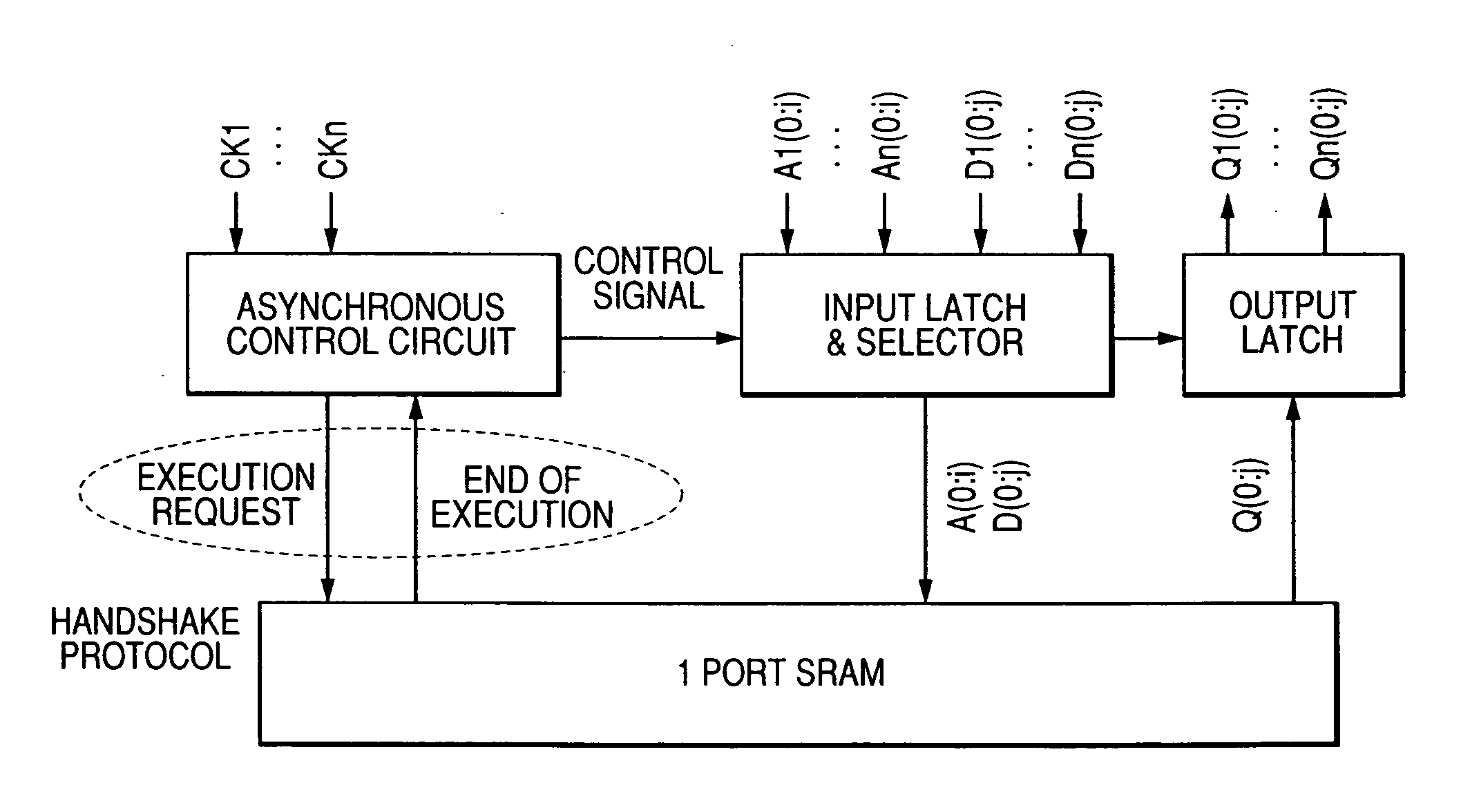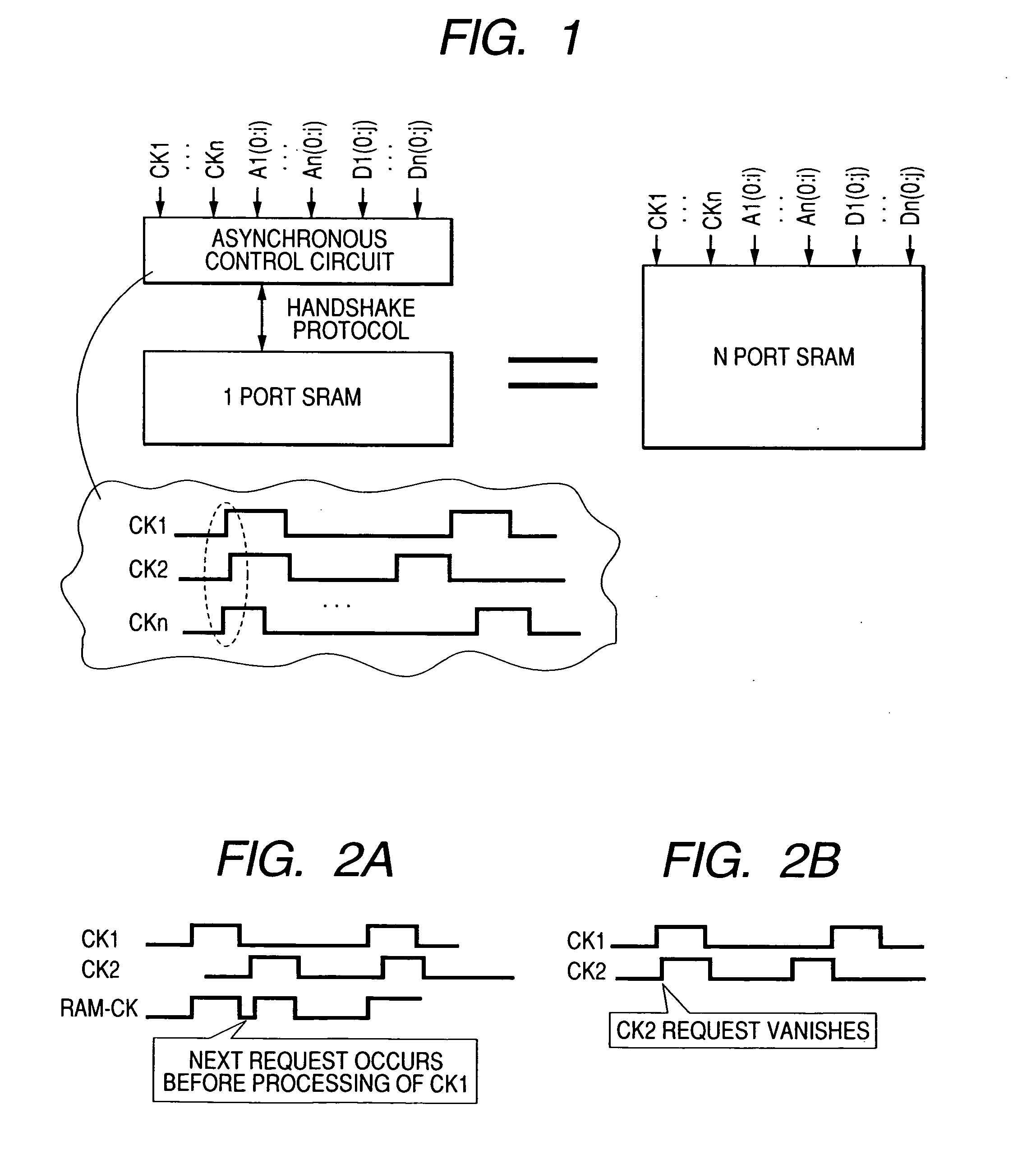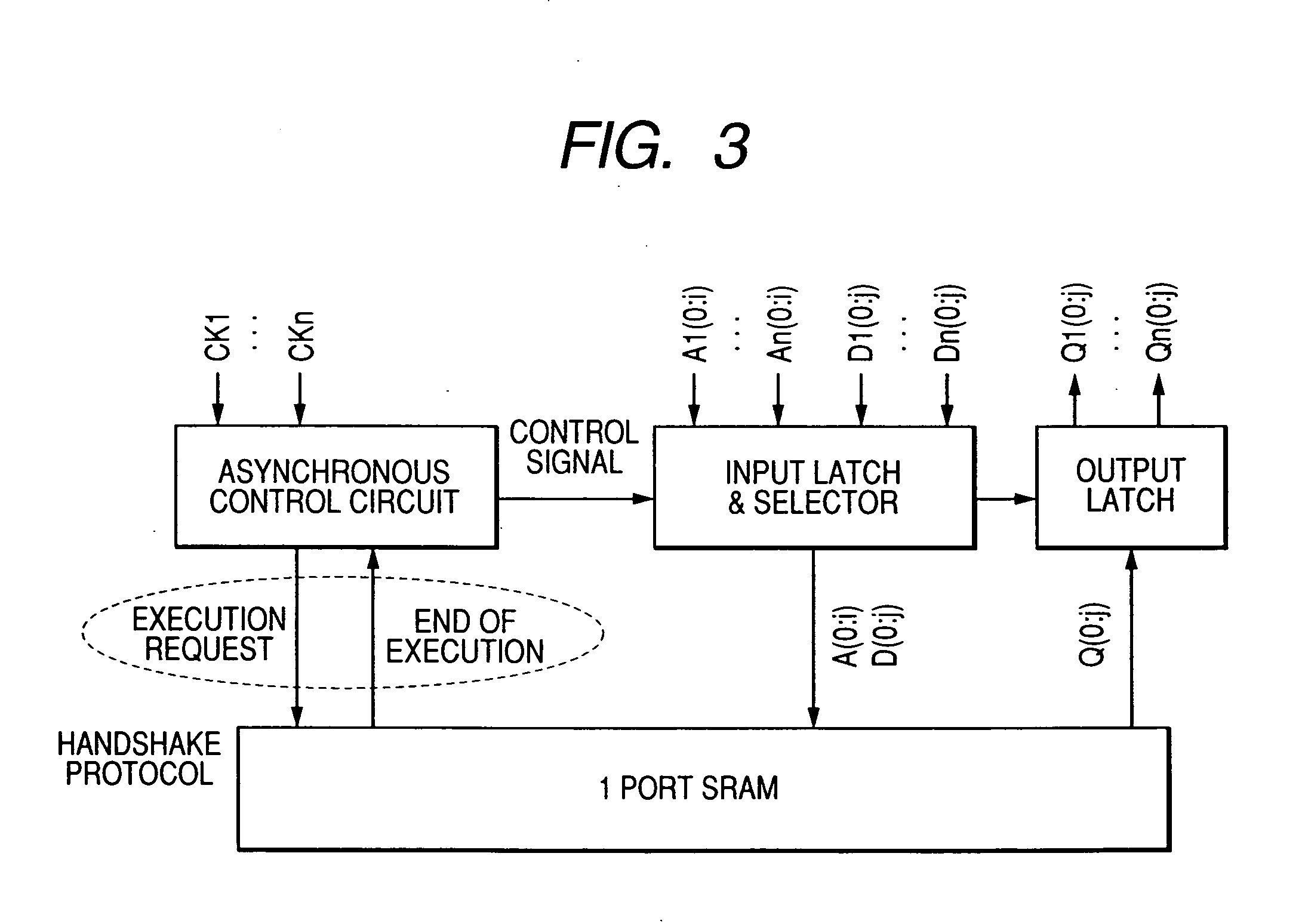Asynchronous control circuit and semiconductor integrated circuit device
- Summary
- Abstract
- Description
- Claims
- Application Information
AI Technical Summary
Benefits of technology
Problems solved by technology
Method used
Image
Examples
Embodiment Construction
[0036]FIG. 1 is a concept diagram illustrating an example of an asynchronous type pseudo-multiport memory according to the present invention. The asynchronous type pseudo-multiport memory of this embodiment combines the asynchronous control circuit with a 1 port SRAM, achieving an equivalent N port SRAM. The above-mentioned asynchronous control circuit acknowledges the clock CK1-CKn, the address signal A1(0:i)-An(0:i) input according to each clock CK1-CKn, and the data signal D1(0:j)-Dn(0:j), and an equivalent N port SRAM is achieved by exchanging the signals with the 1 port SRAM according to a handshake protocol.
[0037] Here, the address signal (0:i) means i+1 bits from 0−i, and the data signal (0:j) means j+1 bits from 0−j. The above-mentioned clock CK1 or CKn is an access request signal when seen from the memory circuit side, for instance, a chip select signal CS and a chip enable signal CE are essentially regarded as the same as the above-mentioned clock CK in terms of circuit f...
PUM
 Login to View More
Login to View More Abstract
Description
Claims
Application Information
 Login to View More
Login to View More - R&D
- Intellectual Property
- Life Sciences
- Materials
- Tech Scout
- Unparalleled Data Quality
- Higher Quality Content
- 60% Fewer Hallucinations
Browse by: Latest US Patents, China's latest patents, Technical Efficacy Thesaurus, Application Domain, Technology Topic, Popular Technical Reports.
© 2025 PatSnap. All rights reserved.Legal|Privacy policy|Modern Slavery Act Transparency Statement|Sitemap|About US| Contact US: help@patsnap.com



